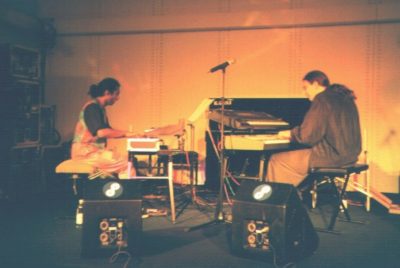new baroque suite

R29.00
This piece owes much to the composer’s deep friendship with Harald Hess towards the end of his life. The music is an inventive pastiche of baroque styles, peppered with jazz harmonies and frequently changing meters that occasionally suggest the fluidity of Indian tala. The subtitle obviously echoes J.S. Bach’s Little Notebook for Anna Magdalena, and as well as references to Harald’s name on the score there are several references to Bach. The 1st movement is ‘invention/sinfonia’, the 2nd ‘interlude I (in the form of a christmas bagatelle)’, the 3rd ‘minuet’, the 4th is called ‘the well-adjusted couple’, and the 5th is ‘gavotte (the whistler)’.
This is one of Surendran Reddy’s last works. It was written in 2009, the last version of it finished on New Year’s Day 2010, three weeks before he died. He left notes about including two more interludes and another dance, but he did not write them. Of the numerous extant Sibelius files the last one, called ‘perfmed 1-5’, is the only one into which Reddy pasted all five completed movements as a continuous suite. The two or three bars of rests at the beginning of some movements may be a technical residue of the difficulties associated with Sibelius, but these extra bars have been left in, in the present edition, because there is also a possibility they were there to add breathing space between movements.
The affixation ‘new’ derives from the fact that Reddy had already written six ‘suites in baroque style’ in the mid-1980s. The new baroque suite sees a return to the spirit but not the letter of these early style studies or studies in ‘musical time travel’. as Reddy puts it. The five movements use counterpoint and binary form (with repeats) and the music is full of precipitous energy and flights of virtuosic fantasy of the kind one would find in an 18th-century keyboard suite, but there are wayward modulations and sudden changes of time signature, too. Moreover, the ‘interludes’ (movements 2 and 4 – although Reddy only called the first one an ‘interlude’) have little to do with 18th-century style. For this edition, Reddy’s formatting has been cleaned up and unnecessary rests deleted. He left no dynamics or phrasing and few expression marks, but none have been added here because he probably intended that interpretation – even ornamentation or improvisation – be left to the performer, as it was in early music and is in many of his other late pieces. The metronome marks, however, are all his.


